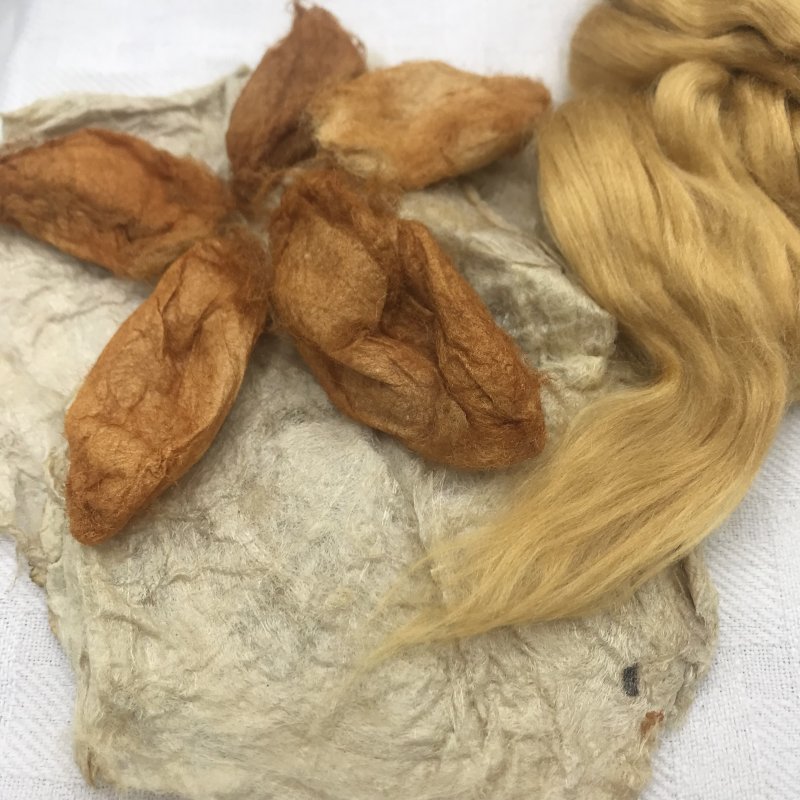
Photo above: Red Eri Silk--cocoons (upper left), Mawata Cakes (bottom) and Sliver (upper right)
Most eri silk is white; however, Philosamia ricini silkworms, raised in the Goalpara District of Assam, India (and a few other locations) are red-gold.
Nearly 10 years ago, Treenway Silks ordered red eri and white eri silk cocoons. The red color is so captivating--people are drawn to it.
However, the natural red color is fugitive, meaning that it doesn't "stay." When red eri is processed, using heated water and mild degumming ingredients, the red color becomes a creamy white, like our new Red Eri Mawata Cakes.
About six months after getting the naturally red cocoons, I ordered some red eri sliver, understanding that it would be a creamy color. Much to my surprise, when I opened the bale, it was similar to the cocoon's red color!
How could that be?!
I asked our Silk Guy from India--a man who is scrupulously honest and who has been the Treenway Silks' India silk supplier for about 20 years--how could the sliver be red?
The mill our Silk Guy used had developed a new, cold water technique, that didn't remove as much sericin, which allowed the original red to stay true. We were told "just 40-50% of the sericin is removed during degumming. This reduces exposure to degumming ingredients, enabling the silk to retain its red-gold color."
The mill stood by their claim of "naturally red" and "new secret process" for 10 years, even though the question of "how can this be" was revisited several times. The process was so secret, no visitors were allowed in the mill while red eri was being processed.
Last month we received new red eri mawata cakes. My Silk Guy has local tribal people make the cakes. These cakes are the creamy white color that one historically expects from processed red eri [see photo above].
More questions to my Silk Guy...can you process the cakes the same way the sliver is processed and keep the red color?
I love our Silk Guy. And he loves Treenway Silks. But maybe he was tired of the question of "naturally red" coming up again.
This time, Silk Guy used a more circuitous approach than asking the mill owner.
It turns out that our red eri sliver is dyed to match the color of the cocoons. We assume they are not using natural dyes, but that couldn't be confirmed.
Some of you might be saying "yup, I knew it had to be dyed all along."
However, I believe people are inherently honest. And I want to believe that new ways of processing silk can still be invented.
Kudos to my Silk Guy for finding the truth (how he did that will be our secret) AND for telling me the truth. A less scrupulous person wouldn't have wanted to reveal a 10-year falsehood.
Here at Treenway Silks, we are committed to silk facts. And if we have wrong information, we will correct it. That's our pledge to you.
